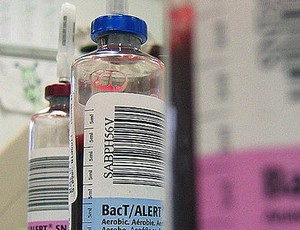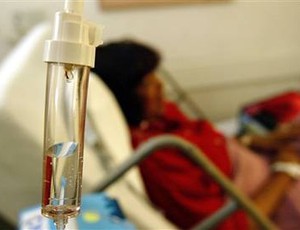Central line associated candidemia with septic pulmonary embolism

“The treatment duration for candidemia with septic pulmonary embolism should be determined based on the clearance of fungus” Okuno et al (2020).
Managing a CLABSI infection due to Citrobacter braakii

“We report our experience managing a central line-associated bloodstream infection (CLABSI) due to C. braakii” Tollkuci et al (2021).
Prolonged flushing and locking interval for implantable ports

“This systematic review and meta-analysis demonstrates that longer flushing intervals for ports are safe” Xiong et al (2021).
Safety of hypodermoclysis in patients with cancer – Full Text

“The objective of this pilot study is to assess the effectiveness and safety of hypodermoclysis (HDC) to close the gap of treatment for home-based palliative patients with cancer” Adem et al (2021).
Fragmented angiocatheter during central venous cannulation

“We experienced a rare CVC complication with fragmentation of the angiocatheter at its hub during central venous cannulation” John et al (2021).
Needlestick Injuries associated with COVID-19 vaccinations – Full Text

“Roll out COVID-19 vaccination programs, while maintaining careful focus on preventing sharps injuries and blood exposure” Persaud and Mitchell (2021).
Machine learning to identify insulin pump infusion site failures

“On the considered dataset, the proposed algorithm showed the potential to improve the safety of patients treated with sensor-augmented pump systems” Meneghetti et al (2021).
Review of new evidence-based strategies for zero CLABSI

“This article aims to review new evidence-based strategies to reduce catheter insertion-related infection” María et al (2021).
Remote OPAT prescription review by infectious diseases specialist – Full Text

“Outpatient antimicrobial stewardship, through remote assessment by an ID specialist, was effective and safe in the OPAT setting” Cassettari et al (2021).
Guidelines for peripherally inserted central catheter in neonates

“Based on the current evidence in China and overseas, the operation and management guidelines for PICC in neonates were developed” vidence-Based Medicine Group, Neonatologist Society, Chinese Medical Doctor Association (2021).
Comparison of intraosseous access and central venous catheterization

“IO access is a safe, rapid, and effective technique for gaining vascular access in critically ill adults with inaccessible peripheral veins in the emergency departments” Liu et al (2021).
Association of vitamin-D level with catheter-related-thrombosis

“The results indicated that in hemodialysis patients without the history of cancer or high blood pressure, vitamin-D had a significant impact on catheter related thrombosis” Rahimi et al (2021).
YouTube as a learning resource for central line insertion

“The gold standard video by NEJM had 320,580 views and was rated highest by both the experts and learners (4.37/5 vs 4.28/5, P = 0.518)” King et al (2021).
Continuous infusion of antibiotics using elastomeric pumps – Full Text

“This program represents very important economic savings for the health system, and the effectiveness of the antibiotic treatment has not been compromised” García-Queiruga et al (2021).
Impact of a dedicated nurse for the prevention of CLABSI

“The outcome resulted in an over 50% reduction in the CLABSI rate and permanent adoption of the DCP-RN role in the NICU” Curry et al (2021).
Review of ionizing radiation exposure during tunneled catheter insertion

“Fluoroscopically inserted td-CVC are associated with a relatively low dose of ionizing radiation, with considerable variability due to the anatomical puncture site and previous accesses’ history” De Mauri et al (2021).
Establishment of an acute headache infusion clinic

“This study provides Class III evidence for an outpatient infusion clinic for saving costs and clinical care time for patients with acute migraines requiring infusion therapies” Reese et al (2021).
Reducing occupational exposure of nurses to antineoplastic drugs

“Despite the current practice of using neutral solvent-purged infusers, the occupational exposure remains high for nurses and Safe Infusion Devices significantly reduced this risk of exposure” Forges et al (2021).
Solutions for skin disinfection to prevent blood culture contamination – Full text

“Overall, CHG-ALC skin preparations were more efficacious than the PVI preparations for blood sampling in children” Maeda et al (2021).
Educational value of an intern-directed vascular access team

“Establishment of an intern-directed difficult IV access team is beneficial to resident education as well as patient care” Golden et al (2021).
Efficacy and cost-effectivity analysis of OPAT services in Turkey

“The evaluation together with the health care system conditions in Turkey revealed that the OPAT program is safe, effective, and cost-efficient” Bastug et al (2021).
Implanted port access in the emergency department

“The emergency nurse-led port access algorithm empowered emergency nurses to educate their patients on implanted port access” Jizba et al (2021).
How to tunnel PICCs and midline catheters?

“The antegrade tunneling technique with blunt tunneler of PICCs and MCs is simple, rapid and is regarded as a safe maneuver” Davide et al (2021).
Intraosseous versus IV access during cardiopulmonary resuscitation – Full Text

“The meta-analysis revealed no significant association between types of vascular access and neurological outcomes at hospital discharge among OHCA patients” Hsieh et al (2021).
Combination of albumin with crystalloids and sepsis survival

“In septic patients, receiving albumin combined within the first 24-h after crystalloids administration was associated with an increment of survival in 28 days” Zhou et al (2021).
Microcatheter-port system for hepatic arterial chemotherapy – Full Text

“Percutaneous arterial port catheter implantation for HAI is highly feasible and carries a low risk of complications” Chevallier et al (2021).
Impact of Chinese herbal ointment on the prevention of phlebitis

“Chahuang ointment was shown to provide effective prevention and protection against phlebitis after peripherally inserted central catheter insertion” Wang et al (2021).
Management of secondary malposition of PICC into the azygos vein

“Study suggested that the right limb is recommended for PICC catheterization in order to avoid secondary malposition into azygos veins” Wang and Zhao (2021).
Frequency of central catheter dressing change in NICU – Full Text

“The primary objective of this randomized controlled trial was to determine the appropriate frequency of dressing for percutaneous central venous catheters in preventing CRBSI” Su et al (2021).
Complications after placement of central venous access ports

“Increased awareness about the limited survival of patients after port placement for palliative chemotherapy” Sachs et al (2021).

